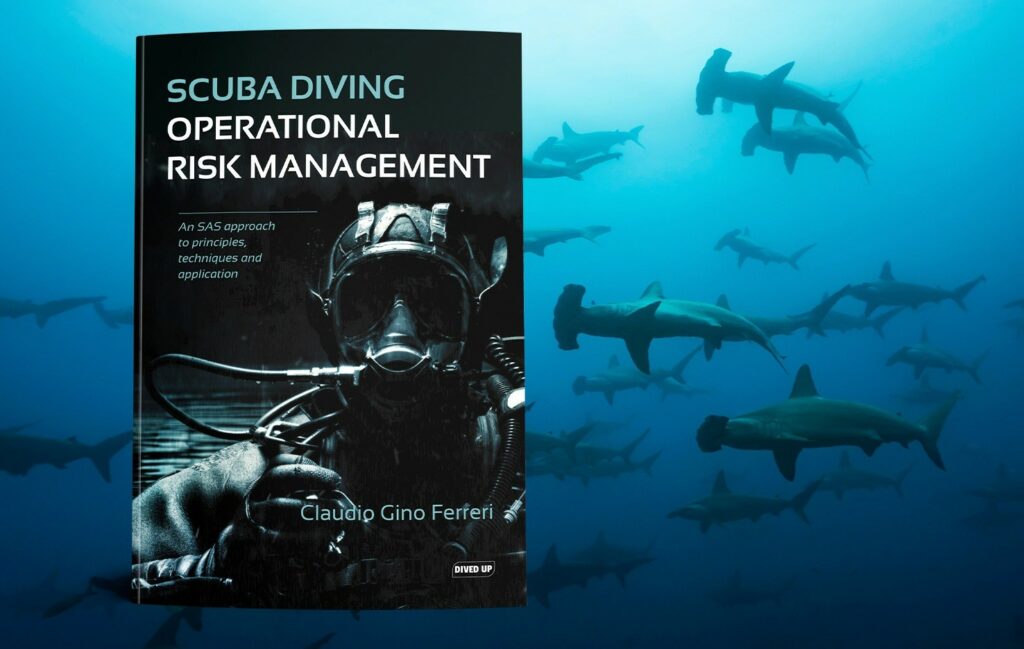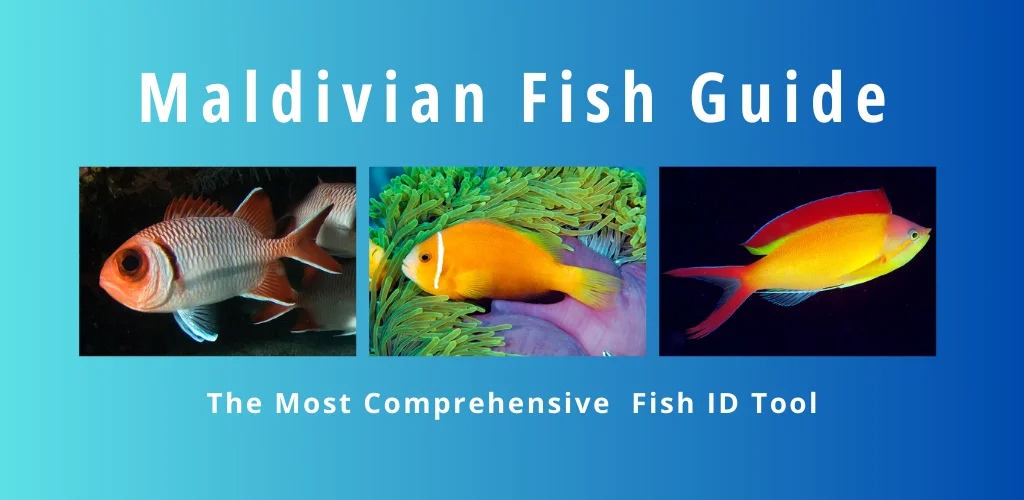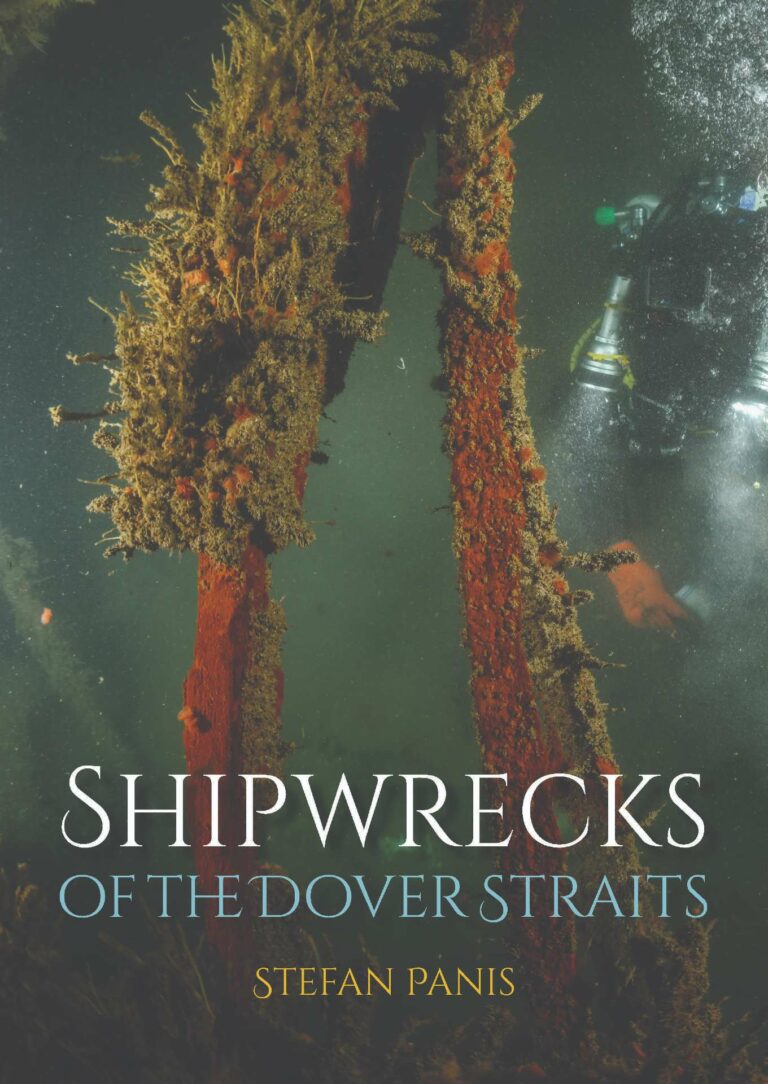Shipwrecks Of The Dover Straits,
by Stefan Panis
I was excited to see that Stefan Panis had finally produced his book about Dover Straits shipwrecks, because I had a good idea of what to expect. From articles written for Diver magazine over the years, I know him to be an excellent all-rounder.
Stefan is a Belgian technical wreck, cave and mine diver, an underwater photo-journalist and a wreck researcher too. He clearly gets great satisfaction from finding submerged treasures – as defined often in terms of vintage rather than monetary value – and the book reflects his fondness for 19th-century Channel shipwrecks.
He had already dived many wrecks off the Belgian and Dutch coasts by the time he teamed up, some 12 years ago, with sharp-eyed UK wreck-divers Eddie Huzzey and his “Dover squad” – specialists in the rich pickings at the narrowest part of the Channel out from Kent.
Their underwater forays have been extraordinarily productive, as this book shows. It is bursting with rich content and I imagine could easily have filled twice the number of pages.
As with his magazine articles, Stefan takes us through the often colourful histories of the vessels while revelling in the sort of diving narrative that brings wrecks to life. He illustrates all this not only with wreck photography that is well above average for UK waters but also topside shots of artefacts retrieved by the group.
The author’s dilemma in portraying his 18 chosen Diver Straits wrecks must have been how to shoe-horn all his high-quality photos into a 200-page, 17x24cm book. Some images benefit from being big, others you can get away with small, and he is often walking a tightrope trying to get the balance right.
I don’t know how many hundreds of shots we’re given – it would take too long to count them. The size balance isn’t always ideal, but no-one could complain about being short-changed.
Even if your eyesight is 20/20, however, you might like to have a magnifying glass to hand should you want to zoom in on some of the details, or to read comfortably the many contemporary newspaper cuttings included. These might have been intended as ornamental by the book’s designer, but that doesn’t stop you wanting to read them.
With so much imagery provided, I remember how long it would take to lay out Stefan’s magazine articles about classic Channel wrecks like the Josephine Willis. That emigrant sailing ship sank in 1876 with the loss of 70 people, and Stefan reminds us in the book that after his Diver article appeared, he was contacted by none other than the captain’s great-great-great-grandson, who was overjoyed when the divers presented him with his ancestor’s sextant.
This book has one or two rough edges that I’m sure will have been smoothed out by the next edition. They’re minor and do nothing to mar the enjoyment of these graphic wreck-diving tales. Shipwrecks Of The Dover Straits is warmly recommended, whether as a wreck-diving guide or simply as slice after slice of maritime history brought vividly to life.
Whittles Publishing, ISBN 9781849954969
Paperback, 212pp, 17x24cm, £18.99
Scuba Diving Operational Risk Management,
by Claudio Gino Ferreri

Make no mistake, this isn’t the sort of book you pick up for a casual read. It’s not a long manual, and it’s straightforward enough to read and understand, with everything rigorously spelt out step by step, as befits the subject matter. However, unless you’re a diver fully invested in gaining serious mastery of the business of risk management, you might lack the motivation to see it through to the finishing line.
It’s important that there are people who organise and supervise dives – and not necessarily only those who do it for a living – and take their dive-planning seriously.
The safety of every diver should of course be everyone’s priority on every dive, and there is also the legal self-protection of those who take responsibility for others to consider. But, as publisher Dived Up also points out, this is a book that aims to encourage increased personal responsibility among all divers.
No harm will be done to its appeal by the sub-heading, An SAS Approach to Principles, Techniques And Application. It’s his training as an Australian SAS assault swimmer that author Claudio Gino Ferreri invokes here, and he wrote his manual in accordance with the ISO 31000 international risk-management standard.
You will need to concentrate to absorb all the planning lessons in this book, working through them with the help of the numerous diagrams, checklists, schematics, tables, examples and exercises. The hope is that, if you do so, the processes involved in minimising risk will start to become automatic.
This book is designed to apply to dives of every type and level, from reef bimble to deep wreck expedition. It also includes a useful “Risk Management Toolkit” to help with everyday planning.

In passing, I note that an ‘incident’ is defined in this book as a risk-related event that results in no serious damage, injury or loss of life, whereas an ‘accident’ is the opposite (resulting in serious damage, injury or death).
That is very different from the definition we have always used on Divernet, where an incident is a risk-related diving event that can have any outcome, from trivial to fatal, whereas an accident implies that no blame is attached, as in “verdict of accidental death”.
Either way, the hope is that by following the advice outlined in the book, both incidents and accidents can be side-stepped.
Anyone who wants to take their dive-planning beyond “using common sense” should find this book a considerable asset – it’s common sense formalised.
Dived Up Publications, ISBN 9781909455498
Paperback, 192pp, 23 x16cm, £20, also available as an eBook

Maldivian Fish Guide (app), by Andrey Ryanskiy
We dutifully note the arrival of each new Ryanskiy guide, the stripped-down, pocket-sized collection of marine-life ID books, but the Sharm-based publisher’s latest publication is described as its first mobile app. Maldivian Fish Guide includes more than 750 species of fish.
I would take issue with its claim of “detailed descriptions” of those fish because Andrey Ryanskiy has always believed in minimising wordage to allow maximum space for his photos, but he certainly puts in the hard yards to provide good-quality and relatable images.
In a crowded section of the market this could be a useful complement to the publisher’s Coral Reefs Maldives ID book. Priced at £9.99, it is downloadable on iOS and Android platforms.
More book reviews on Divernet: Nov 23, Aug 23, Apr 23, Feb 23, Dec 22, Aug 22, Apr 22

